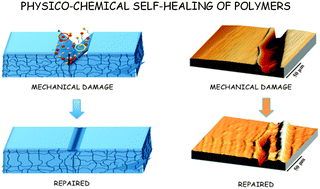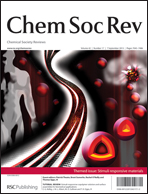Self-healing polymeric materials
Abstract
Inspired by nature, self-healing materials represent the forefront of recent developments in materials chemistry and engineering. This review outlines the recent advances in the field of self-healing polymers. The first part discusses thermodynamic requirements for self-healing networks in the context of conformation changes that contribute to the Gibbs free energy. The chain flexibility significantly contributes to the entropy changes, whereas the heat of reaction and the external energy input are the main contributors to enthalpy changes. The second part focuses on chemical reactions that lead to self-healing, and the primary classes are the covalent bonding, supramolecular assemblies, ionic interactions, chemo-mechanical self-healing, and shape memory polymers. The third part outlines recent advances using encapsulation, remote self-healing and the role of shape memory polymers. Recent developments in the field of self-healing polymers undeniably indicate that the main challenge will be the designing of high glass transition (Tg) functional materials, which also exhibit stimuli-responsive attributes. Build-in controllable hierarchical heterogeneousness at various length scales capable of remote self-healing by physical and chemical responses will be essential in designing future materials of the 21st century.

- This article is part of the themed collection: Stimuli responsive materials

 Please wait while we load your content...
Please wait while we load your content...